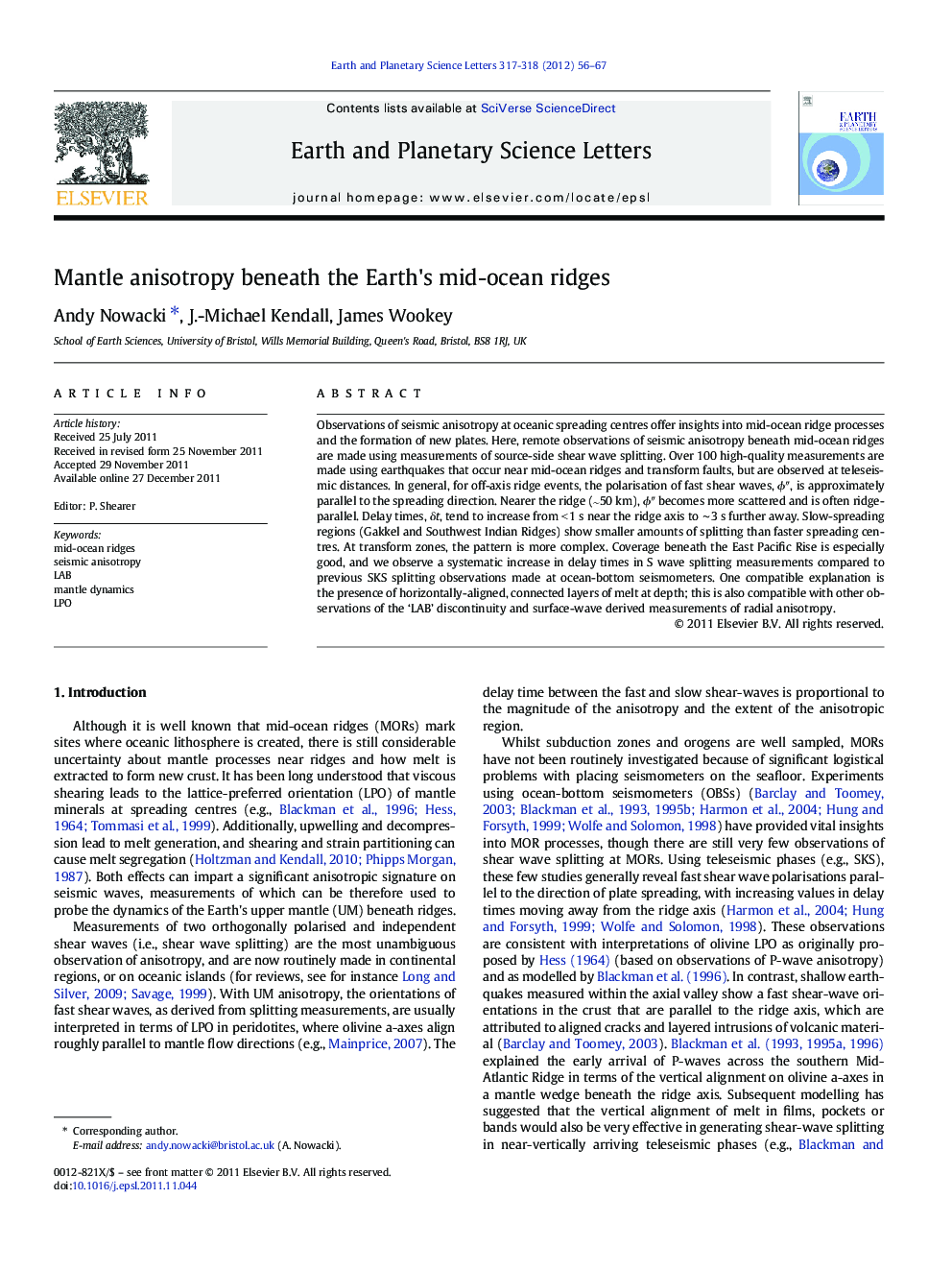| کد مقاله | کد نشریه | سال انتشار | مقاله انگلیسی | نسخه تمام متن |
|---|---|---|---|---|
| 4677623 | 1634812 | 2012 | 12 صفحه PDF | دانلود رایگان |

Observations of seismic anisotropy at oceanic spreading centres offer insights into mid-ocean ridge processes and the formation of new plates. Here, remote observations of seismic anisotropy beneath mid-ocean ridges are made using measurements of source-side shear wave splitting. Over 100 high-quality measurements are made using earthquakes that occur near mid-ocean ridges and transform faults, but are observed at teleseismic distances. In general, for off-axis ridge events, the polarisation of fast shear waves, ϕ ″, is approximately parallel to the spreading direction. Nearer the ridge (<~50 km), ϕ″ becomes more scattered and is often ridge-parallel. Delay times, δt, tend to increase from < 1 s near the ridge axis to ∼ 3 s further away. Slow-spreading regions (Gakkel and Southwest Indian Ridges) show smaller amounts of splitting than faster spreading centres. At transform zones, the pattern is more complex. Coverage beneath the East Pacific Rise is especially good, and we observe a systematic increase in delay times in S wave splitting measurements compared to previous SKS splitting observations made at ocean-bottom seismometers. One compatible explanation is the presence of horizontally-aligned, connected layers of melt at depth; this is also compatible with other observations of the ‘LAB’ discontinuity and surface-wave derived measurements of radial anisotropy.
► Mid-ocean ridge processes can be revealed by the seismic anisotropy they produce.
► We make ~ 120 shear wave splitting measurements beneath mid-ocean ridges globally.
► At ridge segments, the fast wave is usually parallel to the spreading direction.
► Delay times increase with distance from the ridge axis from < 1 up to 3 s.
► Splitting at the EPR is consistent with a layer of radial anisotropy at depth.
Journal: Earth and Planetary Science Letters - Volumes 317–318, 1 February 2012, Pages 56–67